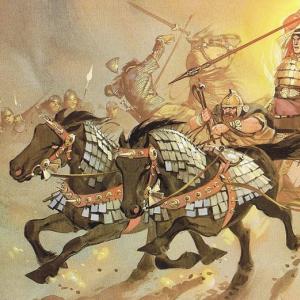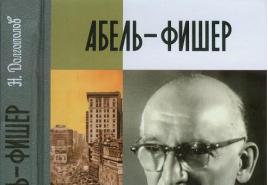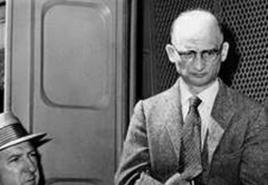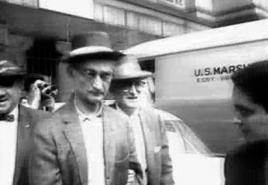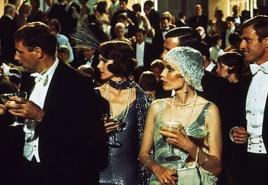Presentation for the lesson "Ideal gas in molecular kinetic theory (MKT). Mean value of the square of the velocity of molecules"
-
Slide 14
Average kinetic energy of the translational motion of the molecule
Slide 15
Relationship between pressure and gas density. Gas density Molecular concentration Molecule mass
Slide 1
Lesson objectives: 1. To have an idea of \u200b\u200bthe ideal gas as a physical model. 2. Understand and enumerate on what values \u200b\u200bthe gas pressure on the vessel walls depends. 3. Write the basic equation of the MKT. 4. Indicate how changes in the quantities included in the basic equation of the MKT affect the change in gas pressure.
Slide 2
Set correspondence:
1. Molecules move at tremendous speeds. 2. Bodies retain their shape and volume. 3. Atoms vibrate around the equilibrium position. 4. The distance between molecules exceeds the size of the molecules. 5. Molecules vibrate, periodically jumping to a new place. 6. Bodies retain their shape, but do not retain their volume. A. Solids. B. Liquids. B. Gases. Answers: 1-C 2-A 3-A 4-C 5-B 6-B
Slide 3
PERFECT GAS It is known that particles in gases, in contrast to liquids and solids, are located relative to each other at distances significantly exceeding their own dimensions. In this case, the interaction between molecules is negligible and the kinetic energy of the molecules is much higher than the energy of intermolecular interaction. To find out the most general properties inherent in all gases, a simplified model of real gases is used - an ideal gas
Slide 4
Ideal gas (model) 1. A set of a large number of molecules of mass m0, the sizes of molecules are neglected (molecules are taken as material points). 2. Molecules are at great distances from each other and move chaotically. 3. Molecules interact according to the laws of elastic collisions, forces of attraction between molecules are neglected. 4. The velocities of molecules are varied, but at a certain temperature the average velocity of the molecules remains constant. Real gas 1. Molecules of real gas are not point formations, the diameters of molecules are only tens of times less than the distances between molecules. 2. Molecules do not interact according to the laws of elastic collisions.
Slide 5
Slide 6
Ideal gas pressure versus:
Molecular masses Molecule concentrations Molecular velocities
Slide 7
Slide 8
Slide 9
Slide 10
Slide 11
Basic equation of ideal gas MKT. Gas pressure [Pa] Molecule mass [kg] Molecule concentration Molecular velocity [m / s]
Slide 12
How will the gas pressure on the vessel walls change if:
the mass of a molecule will increase 3 times the concentration of molecules will decrease 4 times the speed of movement of molecules will increase 2 times the volume will increase 5 times the mass of a molecule will decrease 4 times, and the concentration will increase 2 times the mass of a molecule will increase 2 times and the speed of movement of molecules will increase 3 times the concentration of molecules will increase 3 times, the speed of movement of molecules will decrease 3 times
Slide 13
Relationship between pressure and average kinetic energy
"Air temperature and humidity" - Energy during condensation of liquid ... Pressure and density of saturated water vapor at different temperatures. Evaporation occurs ... 6. There is always a certain amount of water vapor in the atmospheric air. 8. Evaporation -… Determines the absolute humidity of the air by the dew point. 9. Saturated steam ...
"Gas molecules" - V. Gases. Answers: Relationship between pressure and gas density. 2. Understand and enumerate on what values \u200b\u200bthe gas pressure on the vessel walls depends. 3. Write the basic equation of the MKT. Ideal gas in MKT. 1. Have an idea of \u200b\u200bideal gas as a physical model. Molecular mass Molecular concentration Molecular velocity.
"Stern's Experience" - Problem No. 2. STERN Otto (1888-1969), physicist. Born in Germany, since 1933 in the USA. Problem number 1. PERRIN Jean Baptiste (1870-1942), French physicist, grade 10. The cylinders began to rotate at a constant angular velocity. History of physics in questions and problems. Optional lessons in physics. Described the nucleus of a plant cell and the structure of the ovule.
"Air humidity" - What devices are used to determine air humidity? Municipal educational institution "Kemlyanskaya secondary school" of the Ichalkovsky municipal district of the Republic of Mordovia. What role does evaporation play in human life? Absolute humidity. What is called absolute air humidity? Lesson objectives: Consolidation. Why do window panes sweat in winter when there are a lot of people in the room?
"Air humidity lesson" - Is the hygrometer reading correct? Air humidity table. 1. Motivation of cognitive activity (1718, St. Petersburg. Formed skills: 3. Relative humidity in the evening at 16? C is 55%. Compare; analyze; draw conclusions; work with devices, tables, calculators. The dew point is removed by a thermometer , and then determine the relative humidity.
"Air" - Air value. In such a "shirt" our planet does not overheat from the Sun. All life on Earth breathes air. Air properties. Formation of skills to present the information received in the form of graphic drawings. Then he pumped air out of the ball, plugged the hole and put it back on the scales. And "emerge" from the air ocean is possible only on a spaceship.
There are 19 presentations in total
PERFECT GAS PERFECT GAS LAWS
PERFECT GAS
Is a theoretical model of a gas that does not take into account the size of molecules (they are considered material points) and their interaction with each other (except for cases of direct collision). Real gases are well described by the ideal gas model, when the average kinetic energy of their particles is much greater than the potential energy of their interaction. This happens when the gas is sufficiently heated and rarefied (helium, neon under normal conditions).

BOYLE-MARIOTT'S LAW
- at a constant temperature, the product of the volume of a given mass of gas and its pressure is a constant value. In modern physics, the Boyle – Mariotte law is considered as one of the consequences of the ideal gas equation of state (Mendeleev – Clapeyron equation). It follows from the Boyle – Mariotte law that at a constant gas temperature, its pressure is inversely proportional to its volume.

ISOTHERMAL PROCESS
If the gas temperature remains constant, then boyle-Mariotte law : pV \u003d const.



GAY-LUSSAC LAW
- at constant pressure and mass of gas, the ratio of gas volume to its absolute temperature is a constant value. In modern physics, the Gay-Lussac law is considered as one of the consequences of the equation of state for an ideal gas (Mendeleev – Clapeyron equation).








ADIABATIC PROCESS (adiabatic process)
Is a model of a thermodynamic process that occurs in a system without heat exchange with the environment. The line on the thermodynamic diagram of states of the system, depicting an equilibrium (reversible) adiabatic process, is called adiabat.




The provisions of the kinetic theory: 1. Gases consist of small solid particles in constant, fast and disorderly motion. 2. The particles move in straight lines. Their movements are affected only by collisions with other particles or with the walls of a vessel in which the gas is contained. The forces of attraction between molecules can be neglected. 3. All collisions are absolutely elastic. 4. The time that the particles are in contact with each other is very short and can be neglected. 5. The intrinsic volume of molecules is very small in comparison with the space in which they move. 6. The kinetic energy of molecules is much greater than the potential energy of interaction. 7.Gases are able to expand indefinitely and occupy the entire volume provided to them. 8. A mixture of gases exerts on the walls of the vessel a pressure equal to the sum of the pressures of each individual gas (Dalton's law): the pressure in a mixture of chemically non-interacting gases is equal to the sum of their partial pressures p \u003d p 1 + p 2 + p 3 + ... 9. The gas laws are valid ( Boyle - Mariotte, Charles).

An ideal gas is a theoretical gas model in which the size and interaction of gas particles are neglected, and only their elastic collisions are taken into account. The sizes of the molecules are small compared to the distances between them. The forces of interaction are manifested only at the moment of collisions. The molecules are evenly distributed throughout the volume. Gas molecules move chaotically, that is, the same number of molecules moves in any direction. Molecular velocities can take any values. Collisions are absolutely elastic. The number of molecules is very large. For a single molecule, Newton's laws are true.


The average value of the square of the velocity of molecules In different gases, molecules have different scalar velocities, but the average kinetic energy remains constant. The ec of molecules depends on the square of the velocity, therefore…. Let V 1, V 2, V 3 ……. V N -, molecular velocity modules





Back forward
Attention! The slide preview is used for informational purposes only and may not represent all the presentation options. If you are interested in this work, please download the full version.
1st level of difficulty.
Lesson type: combined.
Total lesson time: 1 hour 10 minutes.
Organizational moment (number, topic, organizational issues).(t \u003d 2–3 min.)
(Slide 1)
UE 0. Setting goals:
Didactic purpose of the module:
(Slide 2)
- Acquaintance with the theory of sufficiently rarefied gases.
- Proof that the average speed of molecules depends on the movement of all particles.
UE 1. Knowledge update
Private didactic goal:
- Updating basic knowledge on topics in module M1– M4.
- Clarification of the degree of assimilation of educational material by students in order to further eliminate the gaps.
Exercise 1.
Students of D - type: Fill in the table, indicating the designation (symbol) of the physical quantity and its unit of measurement.
Result evaluation:1 point.
For students I - type: Think over logical connections between formulas (branches).
Create a "physical tree" yourself.
Evaluation of the result: 1 point.
Task 2.
(Slide 3)
Generalized algorithm for solving a typical problem:
Students I - type:
Problem number 1.
1. Determine the number of atoms in 1 m 3 of copper. The density of copper is 9000 kg / m 3.
2. Use a generalized algorithm for solving problems of this type; apply it to the solution to this problem by listing the step-by-step actions you completed.
Evaluation of the result: 1 point.
Students D - type:
Problem number 1.
- The mass of the silver strip obtained during the rotation of the cylinder during the physical experiment is 0.2 g. Find how many silver atoms it contains.
- List the step-by-step steps you took to solve the problem. Compare the steps you highlighted with the actions of a generalized algorithm for solving this type of problem.
Evaluation of the result: 1 point.
3rd stage. Main. Presentation of educational material.
(t \u003d 30–35 min.)UE 2. Physical model of gas - ideal gas.
(Slide 4)
Private didactic goal:
- Formulate the concept of "ideal gas".
- Formation of a scientific worldview.
(IT, IE, ID, DT, DE, DD)Teacher explanations
Part 1. When studying phenomena in nature and technical practice, it is impossible to take into account all the factors influencing the course of this or that phenomenon. However, experience can always establish the most important ones. Then all other factors that do not have a decisive influence can be neglected. On this basis, idealized (simplified) idea of \u200b\u200bsuch a phenomenon. The model created on this basis helps to study the processes actually occurring and predict their course in various cases. Consider one such idealized concept.
(Slide 5)
F.O. - What are the properties of gases?
- Explain these properties based on ICT.
- How is pressure indicated? SI units?
The physical properties of a gas are determined by the chaotic movement of its molecules, and the interaction of molecules has no significant effect on its properties, and the interaction has the character of a collision, and the attraction of molecules can be neglected. Most of the time, gas molecules move like free particles.
(Slide 6)
This allows us to introduce the concept of an ideal gas, in which:
- the forces of attraction are completely absent;
- interaction between molecules is not taken into account at all;
- molecules are considered free.
Exercise 1.
Cards with an assignment for each student I, D - type .
Students of I type:
- After studying carefully §63 page 153, find in the text the definition of an ideal gas. Memorize it. (1 point)
- Try to answer the question: "Why is the kinetic energy of the discharged gas much greater than the potential interaction energy?" (1 point)
D-type students:
- Find in the text § 63 page 15 the definition of an ideal gas. Memorize it. (1 point)
- Write down the wording in a notebook. (1 point)
- Using the periodic table, name the gases that best fit the concept of "ideal gas". (1 point)
UE3. Gas pressure in MKT.
Private didactic goal:
1. Prove that despite the change in pressure, p 0 ≈ const.
- What do gas molecules have on the walls of the vessel during their movement?
- When will the gas pressure be higher?
- What is the impact force of one molecule? Can a pressure gauge record the impact force of one molecule? Why?
- Draw a conclusion why the average value of pressure p 0 remains a certain value.
Gas molecules, striking the wall of the vessel, exert pressure on it. The magnitude of this pressure is the greater, the greater the average kinetic energy of the translational motion of gas molecules and their number per unit volume.

Exercise 1.
Cards with an assignment for each student I, D - type .
Students I, D - type:
Conclude: Why does the average value of gas pressure p 0 in a closed vessel remain practically unchanged?
Evaluation of the result: 1 point.
Explanations of the teacher (IT, IE, ID, DT, DE, DD):
The gas pressure build-up can be explained using a simple mechanical model.
(Slide 8)
UE 4. Average values \u200b\u200bof the velocity modulus of individual molecules.
(Slide 9)
Private didactic goal:
Introduce the concept of “average value of speed”, “average value of square of speed”.
Exercise 1.
Cards with an assignment to each student I, D - type.
Students I - type:
Please read § 64 pp. 154-156 carefully.
- Find the answers to the questions in the text:
- Write your answers in a notebook.
Students D - type:
Study § 64 pp. 154-156. (1 point)
- Answer the questions:
1.1 What determines the average speed of movement of all particles?
1.2. What is the mean of the square of the speed?
1.3. The formula for the mean square of the speed projection. - Write your answers in a notebook.
Generalization of the teacher (IT, IE, ID, DT, DE, DD):
(Slide 10, 11)
Molecular velocities vary randomly, but the mean square of the velocity is quite a definite value. In the same way, the growth of students in the class is not the same, but its average value is a certain value.

Task 2.
Cards with an assignment to each student I, D - type.
Students I - type:
Students D - type:
| Problem No. 2. During the Stern experiment, the silver strip turns out to be somewhat blurred, since at a given temperature the velocities of the atoms are not the same. Based on the data of determining the thickness of the silver layer in different places of the strip, it is possible to calculate the fraction of atoms with velocities lying in one or another interval of velocities of their total number. As a result of measurements, the following table was obtained: |
4th stage. Control of knowledge, skills of students.
(t \u003d 8-10min.)UE5. Output control.
Private didactic goal: To check the assimilation of educational elements; evaluate your knowledge.
Cards with an assignment for each student I, D - type .
Exercise 1.
Students I, D - type
Consider which of the following properties of real gases are not taken into account, and which are taken into account in the ideal gas model.
- In a rarefied gas, the volume that would be occupied by gas molecules in their dense "packing" (intrinsic volume) is negligible compared to the entire volume occupied by the gas. Therefore, the intrinsic volume of molecules in the ideal gas model ..
- In a vessel containing a large number of molecules, the movement of molecules can be considered completely chaotic. This fact in the ideal gas model….
- Ideal gas molecules are, on average, at such distances from each other that the adhesion forces between the molecules are very small. These forces are in moths of ideal gas….
- Collisions of molecules with each other can be considered absolutely elastic. These are the properties in the ideal gas model….
- The movement of gas molecules obeys the laws of Newtonian mechanics. This fact in the ideal gas model….
A) not taken into account (are)
B) taken into account (are)
Task 2.
- Each of the expressions for the velocities of molecules (1–3) is explained (A – B). Find them.

A) According to the vector addition rule and the Pythagorean theorem, the square of the speed υ any molecule can be written as follows: υ 2 \u003d υ х 2 + υ у 2
B) the directions Ox, Oy and Oz due to the disorderly movement of molecules are equal.
C) for a large number (N) of chaotically moving particles, the velocity modules of individual molecules are different.
Evaluation of the result: check yourself by the code and rate. For each correct answer - 1 point.
5th stage. Summarizing.
(t \u003d 5 min.)UE6. Summarizing.
Private didactic goal: Fill out the checklist; evaluate your knowledge.
Control sheet (IT, IE, ID, DT, DE, DD):
Fill out the checklist. Calculate the points for completing assignments. Give yourself a final grade:
16-18 points - “5”;
13-15 points - “4”;
9-12 points - "test";
less than 9 points - “failed”.
Return the checklist to the teacher.
| Training element | Assignments (question) | Total points | |
| 1 | 2 | ||
| UE1 | 1 | 1 | 2 |
| UE2 | 3 | 3 | |
| UE3 | 1 | 1 | |
| UE4 | 1 | 3 | 4 |
| UE5 | 5 | 3 | 8 |
| Total | 18 | ||
| Assessment | …. | ||
Differentiated homework:
"Offset": Find in the table “Periodic table of elements of D.I. Mendeleev ”chemical elements, which in their properties are closest to the ideal gas. Explain your choice.
“Fail”: § 63–64.
(Slide 12).
Internet resources:



